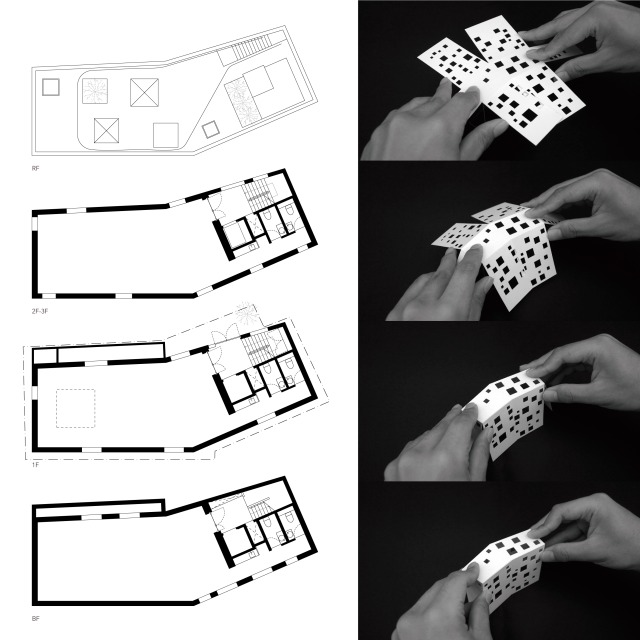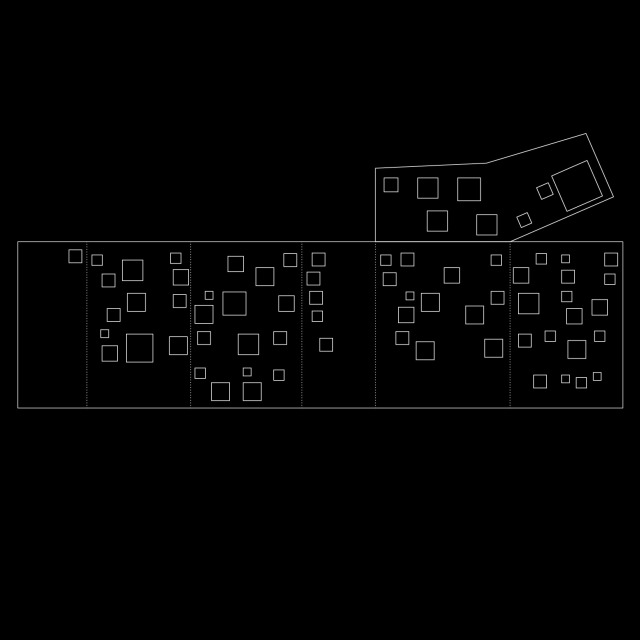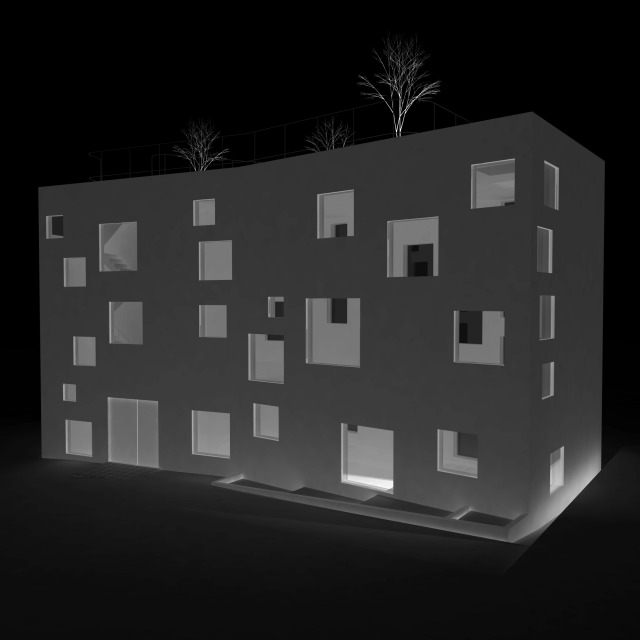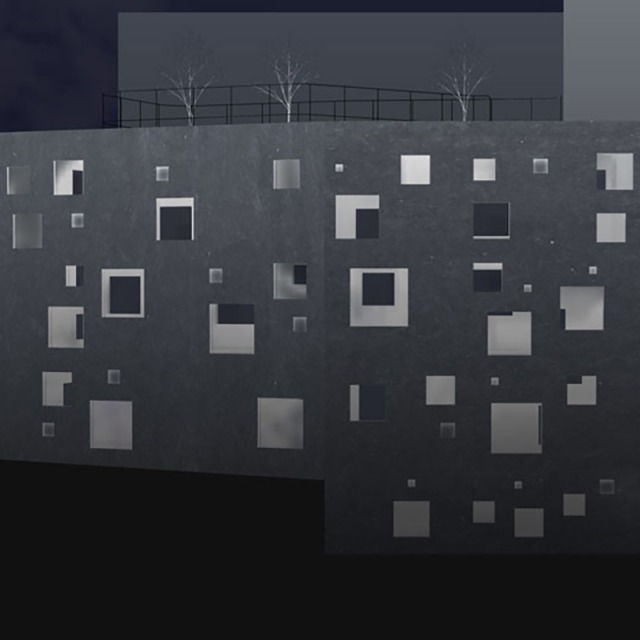R4
Roppongi, Tokyo, Japan, 2013—2014
Office
If judged solely by proliferation, the office is, among all of today’s predominant building types, perhaps the one with the greatest success story:
When the idea of the office as (rooms in) a building appears for the first time in the 16th century as more and more administrative functions are placed into their own specially built spaces, it only takes a few centuries for the “office building” to become the most ubiquitous and defining type of inner-urban architecture.
By the 20th century, cities, which haste to embrace progress through new construction, are largely defined by skylines made almost entirely from their office high-rises.
The homogeneity of plan and elevation of the office (offices are hardly ever as spectacular or deliberately ostentatious as other building types), embodies the prevailing understanding of white-collar efficiency: Repetition of only marginally different tasks. Desks are the new conveyor belts.
The office, perhaps more than any other singular building type, carries the true notions of the political or socio-economical ideologies it is born in.
Roppongi
When commissioned to design a small office building in a prime yet hidden location a short walk from Midtown and Roppongi Hills, two of Tokyo’s fattest office manifestations of recent years, we began to have a closer look at the still prevailing homogeneity of the large office building versus the deliberate and often naïve attempts at differentiation in dot-com’s campus-like “office-is-my-home” ensembles.
Concepts for the R4 building always came back to the question how scale and location would inform an inner-city office type, and, interestingly, how exactly this contextual necessity might in fact perfectly reflect an environment of unforced, informal, perhaps even natural “work efficiency”.
The site, a left-over squeezed between manifestations of not only for the location improbable amassment of earnest junk, proved more and more critical in this process: inconspicuous despite its prime location, dominated by a myriad of constraints that make it highly difficult to build on, between narrow road and a derelict cemetery, flanked by a 40m-tall apartment building and other nondescriptness, sights of a nearby park.
Here, the architectural response could hardly be one mass of undifferentiated transparent homogeneity. Instead, a logical response was a field of multiple, varying focal points that would deal with the surroundings at discrete levels as well as in the overall unity of the office building.
Envelope
A total of just four floors makes repetition not a top priority in terms of building economics. But beyond a repetition of self-similar cut-outs, we wrapped the entire building in an envelope with a field of openings generated by iterations of structural and lighting analyses. As the clear-cut definition of floors seems to disappear, the building attains a new dimension: a gradually changing diversity within an overall unity. Every point in the building is uniquely different.
Structure
The envelope is the structure. What has been considered a recipe for functional restriction predating the modernist ideal of flexibility turns out to work in favour with the given scale: The envelope has become all, no interior walls are necessary, nor are columns. Each of the four units is one free space defined by the envelope wrapping around it. The decision then is to forgo the usual structure + curtain wall and make the exterior envelope perform on many levels: free the interior, filter the outside, carry the loads.
This move away from an ubiquitous homogeneity means there is no longer a “nothing else is possible” but a “many possible nuances to choose from”.
Roppongi, Tokyo, Japan, 2013—2014
Type
Status
Team
Florian Busch, Sachiko Miyazaki, Momoyo Yamawaki, Akira Miyamoto
Structural Engineering: ASA (Akira Suzuki, Hiroki Akita)
Mechanical Engineering: ymo (Hiroyuki Yamada, Natsumi Tsuchiya)
Environmental Engineering: ymo (Hiroyuki Yamada, Natsumi Tsuchiya)
Contractor: Shin Corporation
Size
GFA: 412 m²
Roof: 103 m²
Structure


















publications
Related Projects:
- R4, 2013—2014
- WHO Extension, 2014
